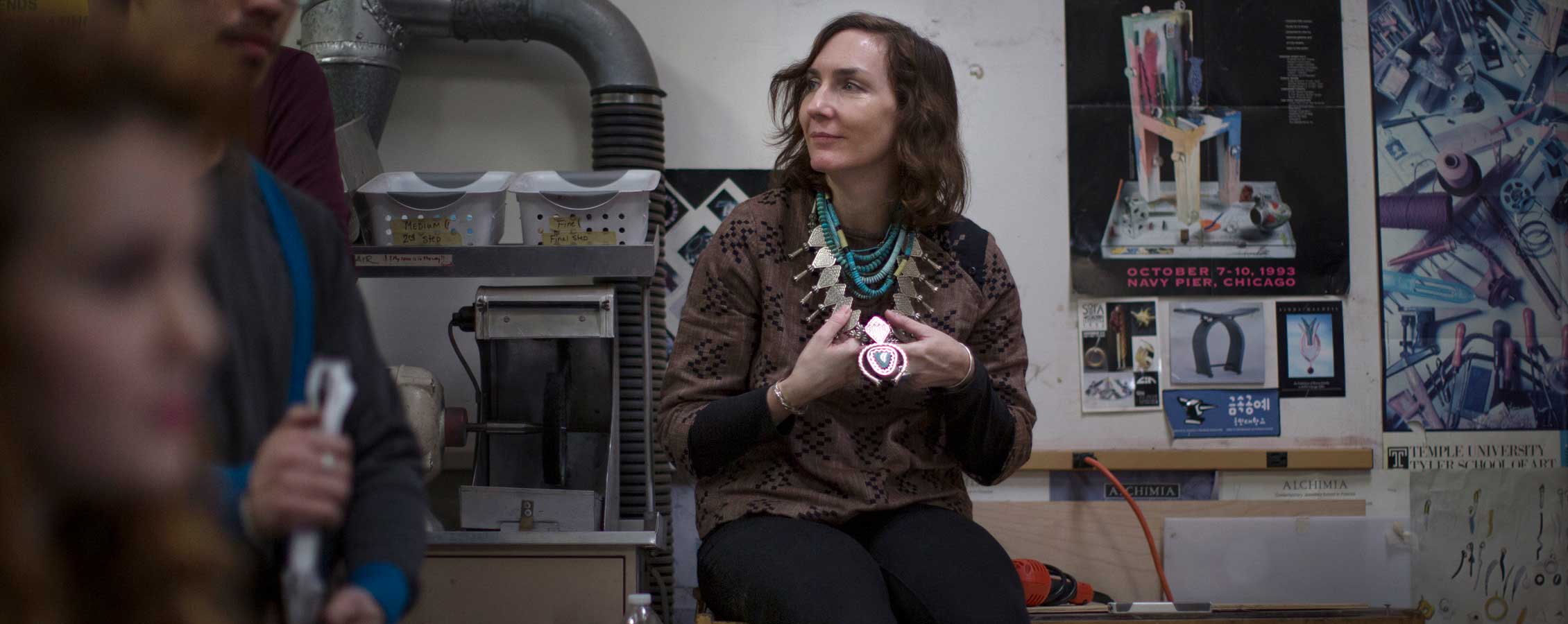Teresa Faris
February 15, 2021
Written by Craig Schreiner | Photos by Craig Schreiner
In Great Teaching, Teresa Faris, professor of art and design at the University of Wisconsin-Whitewater, talks about “making makers” in her metalsmithing and jewelry design courses.
“I chose to teach because I believe in storytelling through objects. I believe that barriers are broken and connections are made when we participate in an activity with a lineage that is as old as humans,” said Faris. “My earliest influences were my maternal elders. My Sámi mother, grandmothers and great-grandmothers passed to me the stories and tools needed to become self-sufficient and creative.”
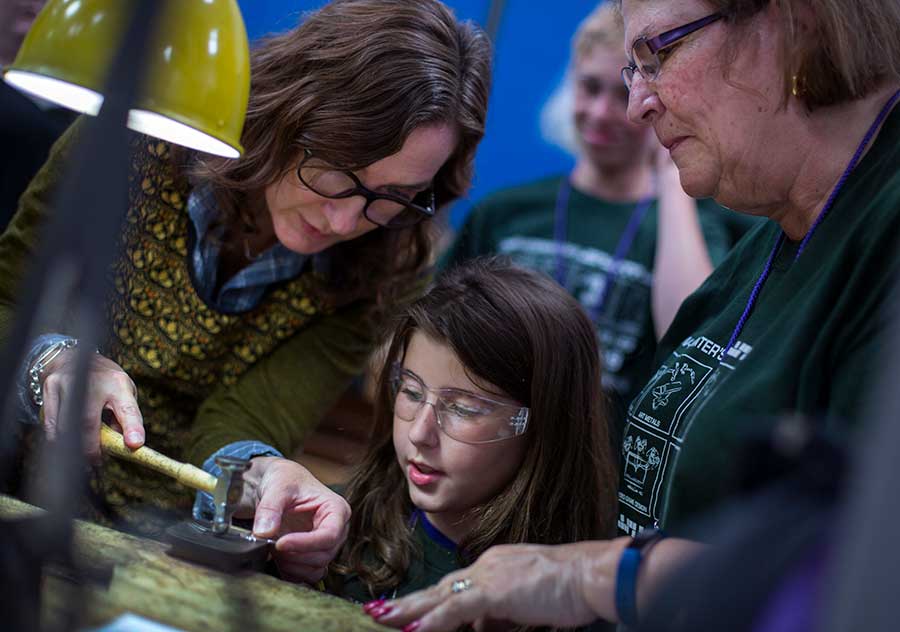
Teresa Faris, left, helped Aubrey Davis, 9, and her grandmother Kathy McFarland, with a heart-shaped pewter medallion they were making to symbolize their feelings about family during a two-day camp, Grandchildren's University, at UW-Whitewater.
Outside of Faris’ studio in the Greenhill Center of the Arts, a “tap-tap-tapping” from the chasing tools echoes in the hall. Inside are vises, anvils, hammers, chisels, punches, files, buffers, wonderful scarred workbenches, metal sheets, rods and wire. And fire. Even tiny chain links are cut, heated and shaped — one at a time — often by the hundreds.
The result is an object as unique as the spirit of its maker — a student whom Faris has polished with care to a fine sheen.
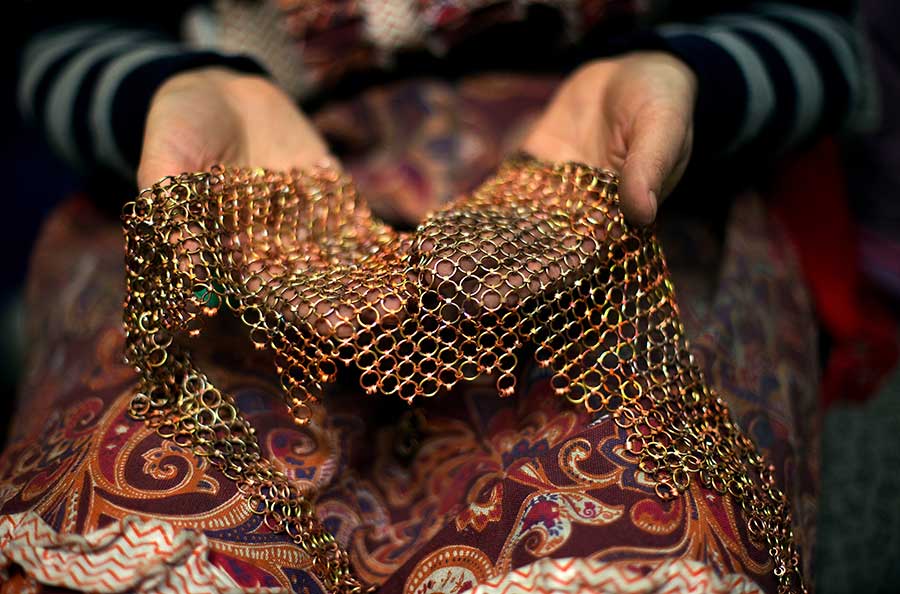
Hundreds of loops, each made from tiny, single pieces of wire and tubing, are part of a necklace that art major Neta Ron, a student of Teresa Faris, made for Undergraduate Research Day.
“I ask students to consider all the ways in which their personal history informs how they understand the world,” said Faris. “Contemplating artwork is an empathetic act. Through class discussions relative to concept-development and object-completion, students are taught to recognize and foster diverse points of view.”
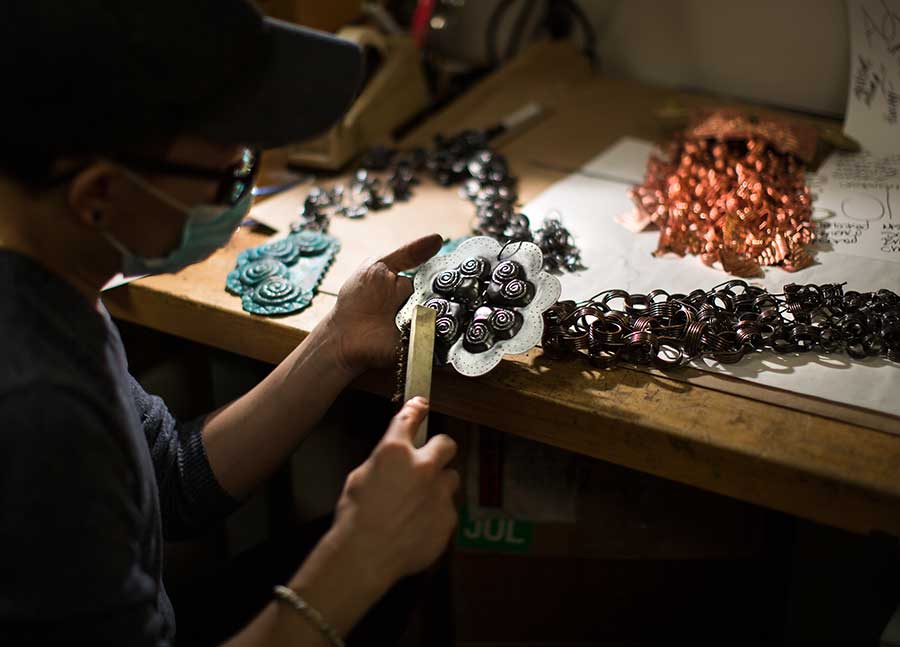
Ger Xiong, an art major from Appleton, works on copper and brass pieces in the metal studio for his Bachelor of Fine Arts exhibition at the end of the spring 2017 semester.
In addition to metalsmithing and jewelry design, Faris teaches a 3D Foundations class.
“Through sculptural object-making and conceptual development, the class explores and reacts to the three-dimensional world we live in,” said Faris. “Metalsmithing and jewelry design offers students the ability to think critically, communicate effectively and gain knowledge of human cultures and the natural world. Students discover and explore adornment, utilitarian objects, metalwork and beads dating from 38,000 BC to the present, with a focus on indigenous cultures and handcraft. Students are exposed to and encouraged to engage in ethical practices relative to using materials that are or once were mined from the earth.”
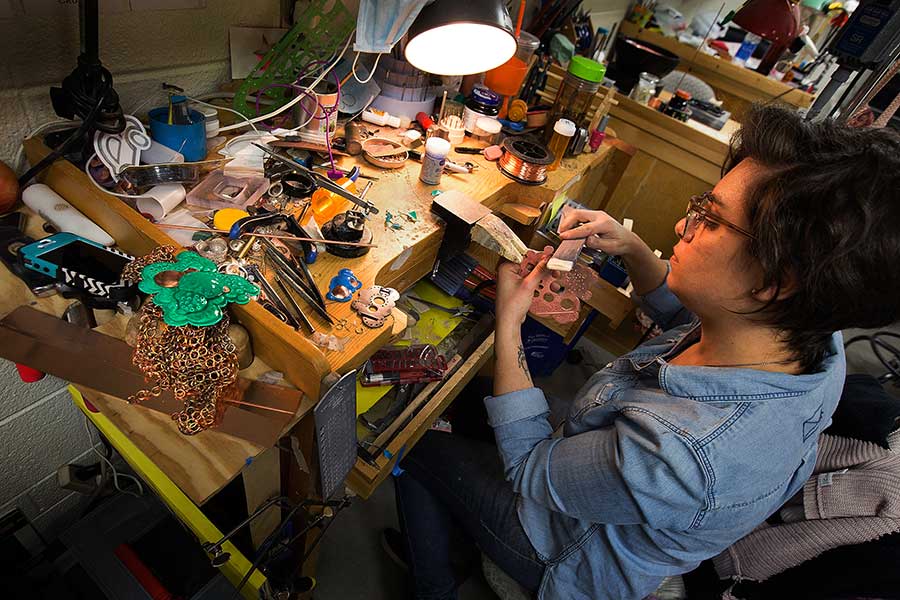
Tools and materials covered the work table of art major Neta Ron, an international student from Israel, as she created a necklace as an undergraduate research project. Ron, who attended the prestigious Rhode Island School of Design in Providence, Rhode Island, after graduating, had heard of Faris’ jewelry design work before applying to UW-Whitewater.
“Cultural appropriation and the co-opting of imagery is a central focus of class discussions and ideation critiques,” said Faris. “Students are encouraged to explore and discover authenticity through object-making. Students investigate the laws and ideas surrounding intellectual property, plagiarism, copyright and appropriation. They continue to build their own visual literacy by viewing contemporary and historical work of professionals and the work of their peers and by creating work of their own in a responsible way.”
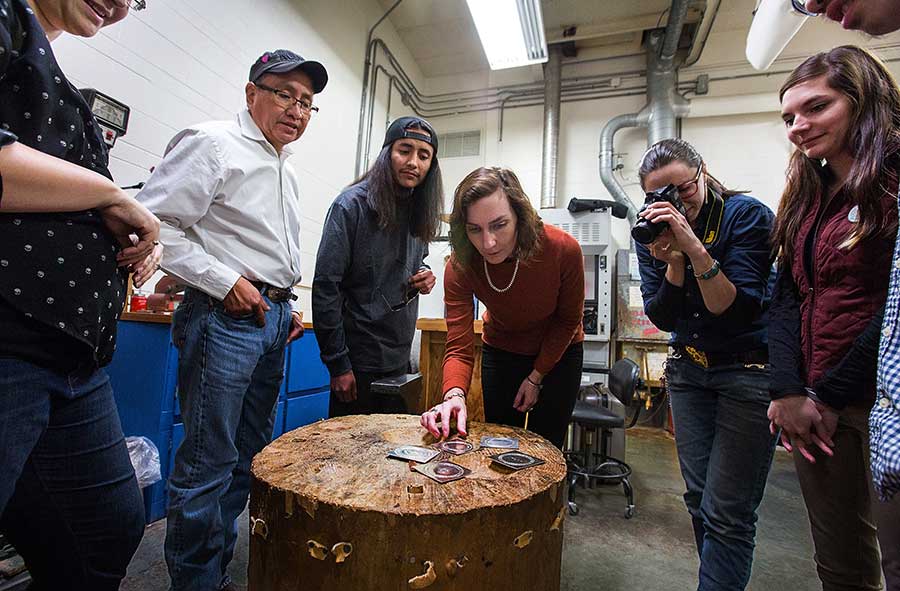
Teresa Faris inspects students' designs inspired by ornate Navajo conchos during a demonstration by Navajo silversmiths in which Allison Lee and his son Trent, second and third from left, worked with students at Greenhill Center of the Arts.
“When I can see the ‘aha!’ moments, I know they will be ok — that I have done my job. I know they have everything it takes to make it, but it is not until they see it in themselves that it matters. Once they see and feel it, then we get to work on the hard stuff like unlearning bad habits and instilling new practices and new discipline.”
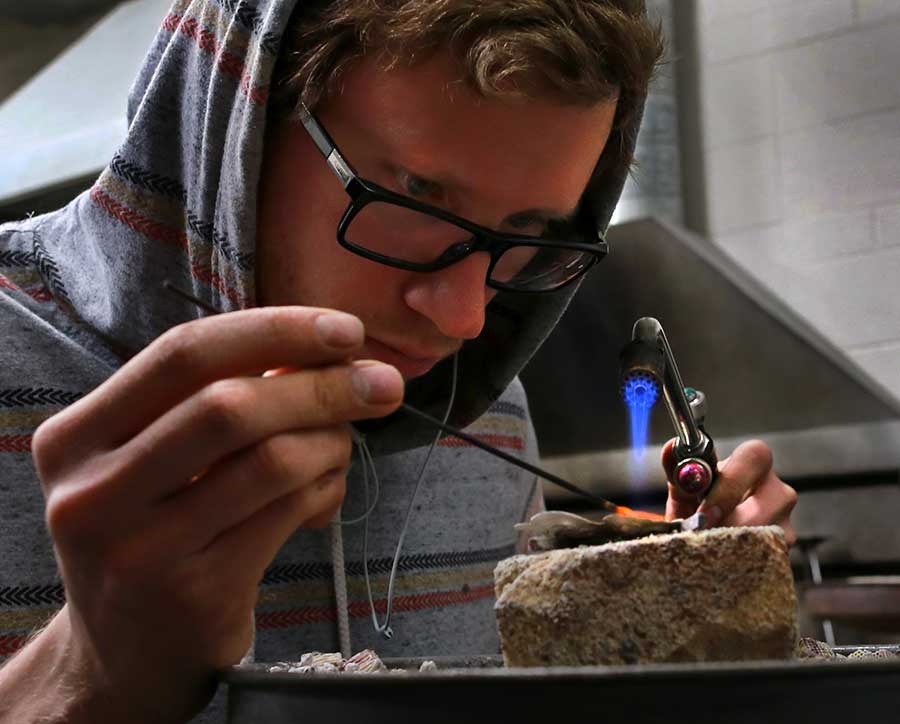
Jason “JJ” Thomson, an art major from Lake Bluff, Illinois, who studied under Faris, said that each one of his copper, brass and sterling silver creations taught him more about his learning disability, which affects his ability to concentrate, and how to share his journey with others.
When asked about the challenges of teaching during the pandemic, Faris turns it back to her students.
“The students are remarkably resilient and rise to every challenge. I find that the more I listen and HEAR them, the better I am at engaging. We are all learning to navigate this at the same time. I see my job as the person who offers consistency, support and endless challenges.”
WHY I TEACH is a series about the dedicated professionals at the University of Wisconsin-Whitewater, including professors, coaches, advisors and other staff members, who make every day a teachable moment — and every place a learning place — by their expertise and example.

